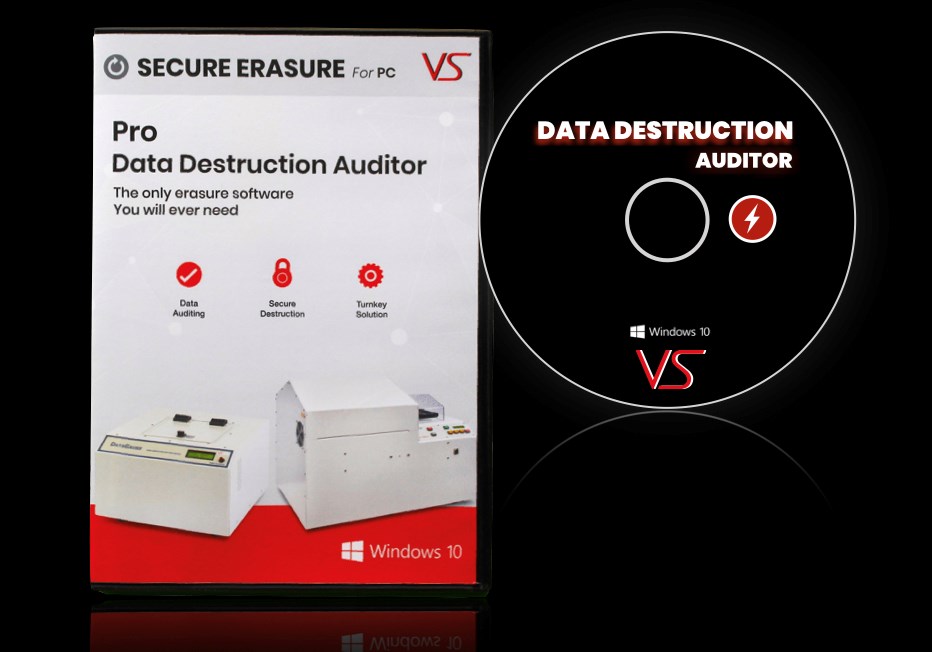How Robust Data Destruction Improves Your Overall Cyber Security Steps
How Robust Data Destruction Improves Your Overall Cyber Security Steps
Blog Article
Checking Out the Relevance of Information Devastation in the Context of Computer System Protection Providers and Protecting Confidential Information
In an era where data breaches are progressively common, the importance of effective information devastation can not be overemphasized. When no much longer essential, Organizations needs to embrace strict measures to guarantee that delicate details is not just secured throughout its lifecycle however additionally emphatically gotten rid of. The techniques used for information removal, coupled with compliance to lawful requirements, play a pivotal duty in maintaining privacy and trust fund. Nonetheless, the effects of these methods expand past mere conformity, influencing a company's track record and functional honesty in the digital marketplace. What approaches can companies implement to enhance their data devastation protocols?
Comprehending Information Devastation
Information damage is a vital component of computer safety that entails the irreversible elimination of data from storage space gadgets to stop unapproved gain access to and possible data breaches. In an increasingly digital landscape, companies encounter increased dangers connected with sensitive info being improperly accessed or made use of. Reliable information damage safeguards versus these hazards, making certain that private dataâEUR" such as consumer details, copyright, and economic recordsâEUR" can not be recouped after disposal.
Comprehending the relevance of data damage expands past mere compliance with legal and regulative structures; it is essential for preserving organizational integrity and count on. When information is improperly handled or improperly destroyed, the consequences can be serious, including monetary loss, reputational damages, and lawful obligations.

Methods of Data Obliteration

One common technique is information cleaning, which entails overwriting existing information with arbitrary patterns multiple times. This technique makes the initial data irretrievable, making it a preferred selection for organizations looking for to protect secret information.
One more technique is degaussing, which uses a powerful electromagnetic field to interrupt the magnetic domains on storage gadgets, properly removing the data. This technique is especially efficient for magnetic media but is not suitable to solid-state drives.
Physical damage is one more robust method, crushing or including the shredding of storage devices. This technique assurances that data healing is essentially difficult, making it perfect for extremely sensitive info.
Lastly, encryption can act as a complementary approach to data removal. By encrypting information before deletion, companies can add an extra layer of security, guaranteeing that also if remnants are recouped, they stay unattainable without the decryption trick. Each method ought to be selected based on the level of data level of sensitivity and the specific security demands of the company.
Legal Conformity and Data Protection
Organizations have to browse a complicated landscape of lawful requirements associated with information safety and security, especially after carrying out approaches of information obliteration. Different guidelines, such as the General Data Security Regulation (GDPR) and the Medical Insurance Transportability and Liability Act (HIPAA), enforce stringent standards on how organizations must get rid of and deal with of delicate data. Failure to comply with these guidelines can lead to significant lawful consequences, consisting of considerable penalties and reputational damage.
Information devastation processes have to be carefully documented to show compliance with suitable regulations and criteria. This documents not just works as evidence of adherence to legal obligations yet additionally illustrates a dedication to guarding delicate info. Organizations must likewise establish clear policies concerning data retention and damage timelines, making certain that information is not held longer than required.

Additionally, regular audits and assessments of data devastation practices are vital to keep conformity and adjust to developing legal frameworks (data destruction). By proactively addressing lawful demands, organizations can minimize threats related to data breaches and show their commitment to information safety. Eventually, focusing on lawful compliance in data devastation procedures is not simply a regulative responsibility, but an essential element of a durable data safety approach
Influence on Service Reputation
The track record of a business can be considerably influenced by its strategy to data destruction and administration. In today's digital landscape, where data breaches can take place anytime, the failing to effectively dispose of sensitive info can bring about extreme consequences. Organizations that improperly handle data devastation risk revealing personal client info, which not just violates privacy regulations but additionally wears down count on amongst clients and stakeholders.
A tarnished track record can cause lowered client commitment, as customers end up being hesitant to involve with a service that has actually shown neglect in shielding their information. Moreover, look at here adverse publicity surrounding an information breach can have a long-term result, as prospective customers might be hindered by the regarded lack of safety and security. This can cause a straight decrease in income and market share.
Moreover, businesses that focus on data devastation as part of their safety technique can improve their track record by showcasing their commitment to guarding delicate info. By taking on rigid information monitoring methods, organizations can not just alleviate risks however additionally place themselves as credible entities in their respective sectors, therefore enhancing their total brand useful content name picture.

Best Practices for Secure Disposal
Applying finest practices for protected disposal of data is vital for alleviating risks related to information breaches and guaranteeing conformity with privacy regulations. Organizations should take on an extensive information disposal plan that lays out procedures for both digital and physical information damage.
For physical information storage space gadgets, such as hard disks, shredding or degaussing is suggested to stop data healing. In addition, organizations should maintain a chain of wardship documentation throughout the disposal procedure, guaranteeing accountability and traceability of disposed products.
For electronic data, making use of software program that complies with industry standards for data cleaning is essential. This software application needs to overwrite existing data numerous times, making recuperation essentially impossible. It is additionally important to confirm the effectiveness of the data damage procedure via audits or third-party assessments.
Educating employees on secure disposal techniques includes an additional layer of safety and security, as human error can often cause data exposure. Regularly examining and upgrading disposal plans makes certain positioning with progressing policies and technological developments. By carrying out these ideal techniques, organizations can significantly decrease the risk of unauthorized information gain access to and enhance their general information defense technique.
Conclusion
To conclude, data destruction is an essential facet of computer safety and security services that ensures the security of personal details from unapproved accessibility. Carrying out effective methods of information eradication, sticking to legal compliance, and acknowledging the effect on business track record are important components of a comprehensive data safety and security technique. By embracing ideal techniques for safe and secure disposal, organizations can foster trust fund with customers and secure delicate data, site web ultimately adding to a much more safe digital landscape.
In an era where data breaches are increasingly typical, the value of effective data damage can not be overemphasized.Data destruction is an essential part of computer safety and security that includes the irreversible elimination of data from storage gadgets to stop unauthorized accessibility and potential data breaches. Organizations should also develop clear policies relating to data retention and devastation timelines, making sure that information is not held longer than needed.
By proactively addressing legal demands, organizations can minimize threats linked with information breaches and demonstrate their commitment to information safety and security (data destruction). Inevitably, prioritizing legal compliance in data devastation processes is not simply a governing obligation, but an essential aspect of a robust data safety method
Report this page